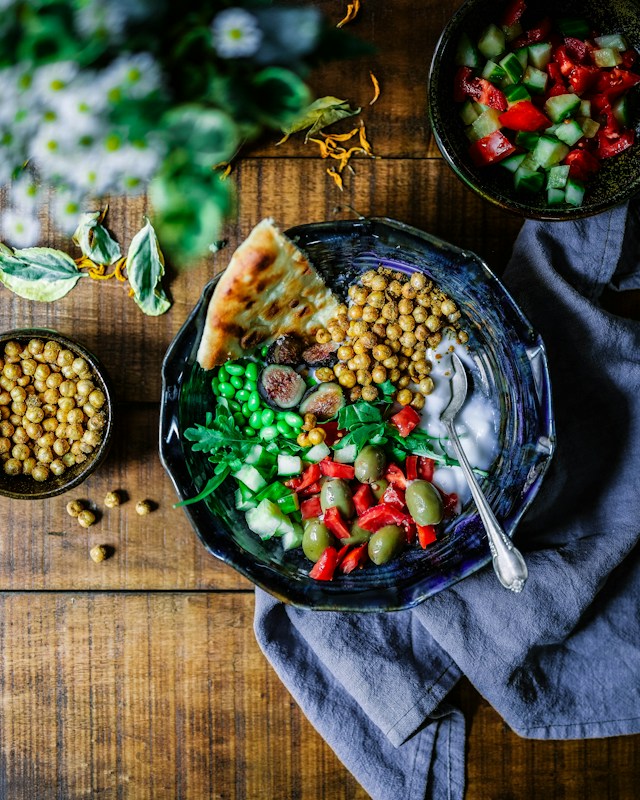The basics of Caribbean cooking

As you embark on a gastronomic journey to the Caribbean, you’ll be introduced to a rich tapestry of flavors, colors, and textures that form the fabric of Caribbean cuisine. With its diverse blend of cultural influences, Caribbean cooking offers a mouthwatering array of dishes that are sure to tantalize your taste buds. From the fiery Jamaican jerk chicken to the comforting Cuban rice and beans, each dish tells a story of the region’s history and culinary heritage. Here, we’ll explore the basic elements of Caribbean cooking, focusing on traditional recipes, key ingredients, and cooking techniques.
The Essence of Caribbean Cuisine
Caribbean cuisine represents a melange of cultures, with African, European, Indian, and Chinese influences. This has resulted in a diverse range of dishes, each with its unique flavors and cooking methods. The cuisine is characterized by its bold flavors, with generous use of spices, herbs, and tropical fruits. Here, we’ll delve into some of the most popular dishes and their typical ingredients.
This might interest you : The benefits of superfoods in your daily diet
Jamaican Dishes and Recipes
Jamaican cuisine is renowned for its spicy jerk dishes, flavorful stews, and aromatic rice dishes. The iconic jerk chicken is a must-try, marinated in a blend of spices including allspice, thyme, and Scotch bonnet peppers, then slow-cooked over pimento wood.
Another popular Jamaican dish is the ackee and saltfish, a savory breakfast dish made with ackee fruit, salted cod, onions, peppers, and a mix of herbs and spices. Rice and peas, a delicious side dish often paired with jerk chicken, is made with coconut milk, kidney beans, and scotch bonnet pepper.
This might interest you : Cooking with fermented foods for health
Cuban Cuisine Delights
Cuban food, on the other hand, is simple yet flavorful. Rice, beans, and meat form the core of the cuisine, with dishes like the classic Ropa Vieja, a slow-cooked beef stew served with white rice. The iconic Cuban sandwich, a mouthwatering mix of ham, roasted pork, Swiss cheese, pickles, and mustard on Cuban bread, is also a must-try.
Arroz con pollo, or chicken and rice, is another Cuban staple. It’s a one-pot dish made with rice, chicken, beer, and a vibrant blend of spices and vegetables.
Key Ingredients in Caribbean Cooking
Certain ingredients form the backbone of Caribbean cooking. By understanding these essential elements, you’ll be well on your way to recreating authentic Caribbean dishes at home.
The Power of Spices and Herbs
Spices and herbs play a significant role in Caribbean cuisine, adding depth and complexity to dishes. Allspice, known as the "Jamaican pepper", is a staple in jerk recipes. Scotch bonnet peppers, known for their fiery heat and sweet undertones, are a common ingredient in Caribbean dishes, while cilantro, oregano, and thyme are often used to enhance flavor.
The Sweetness of Tropical Fruits
Tropical fruits like pineapple, mango, and coconut contribute a natural sweetness and refreshing burst of flavor to Caribbean dishes. Coconut, in particular, is a versatile ingredient used in both sweet and savory dishes. Coconut milk is used to create creamy sauces and curries, and to add a rich, creamy texture to rice dishes.
The Comfort of Starchy Staples
Starchy staples like rice, yam, and plantains are an integral part of Caribbean cuisine. In particular, plantains, which are similar to bananas but more starchy and less sweet, are commonly used in both main dishes and desserts. They are often fried or boiled and serve as a delightful side dish.
The Magic of Caribbean Cooking Techniques
Caribbean cooking techniques are as varied as the ingredients themselves. Let’s explore some of the most common methods that bring out the best flavors.
The Art of Marinating
Marinating is a common technique in Caribbean cooking. This process allows the flavors of the herbs and spices to fully penetrate the meat, ensuring a flavorful result. Jerk chicken, for example, is marinated for hours, or even overnight, in a homemade jerk seasoning before being grilled or roasted.
The Science of Slow Cooking
Slow cooking is another popular technique in Caribbean cuisine. This method not only tenderizes tougher cuts of meat, but also allows flavors to fully develop, resulting in hearty, flavorful stews. The Cuban dish, Ropa Vieja, is a perfect example of slow-cooked goodness.
The Simplicity of One-Pot Cooking
One-pot dishes are a staple in Caribbean cooking. These dishes, like the Cuban Arroz con Pollo, are simple to prepare and packed with flavor. The ingredients are typically cooked together in one pot, allowing the flavors to meld together harmoniously.
In conclusion, Caribbean cuisine is a delightful blend of cultures, flavors, and cooking techniques. With its bold flavors, diverse range of dishes, and unique cooking methods, it’s a culinary treasure trove waiting to be explored. Whether you’re an experienced cook or a novice in the kitchen, these Caribbean cooking basics will pave the way for you to recreate a taste of the Caribbean at home.
Puerto Rican Delicacies and Recipes
Puerto Rican cuisine is an ideal representation of the fusion of Taino, Spanish, and African influences. The result is a delightful array of dishes, rooted in tradition and bursting with flavor.
The Mofongo, a traditional Puerto Rican dish, is a perfect example of the island’s culinary offerings. It is a flavorful mash made of fried green plantains, garlic, and pork cracklings, often served with a savory broth or stuffed with meat or seafood.
Another popular dish is the Arroz con Gandules, the national dish of Puerto Rico. It is a flavorful combination of rice, pigeon peas, and meat, seasoned with a blend of spices, sofrito, and often cooked with olives and capers. Cooked in a single pot, this dish perfectly illustrates the simplicity and flavor of Caribbean cooking.
The Role of Seafood in Caribbean Cooking
Given the Caribbean’s geographical location, seafood is an essential part of Caribbean cuisine. From snapper and grouper to shrimp and lobster, the region’s warm waters provide an abundant variety of marine delicacies.
In Trinidad and Tobago, for instance, curry crab and dumplings is a popular dish, featuring a deliciously spicy curry sauce. The Bahamian conch salad, a citrusy and spicy seafood dish, is another favorite.
Concluding Thoughts on Caribbean Cuisine
Caribbean cuisine is a vibrant and flavorful reflection of the region’s rich cultural diversity. From the fiery jerk chicken of Jamaica to the comforting arroz con gandules of Puerto Rico, each dish offers a unique culinary experience. The use of a wide variety of spices, herbs, tropical fruits, and starchy staples, combined with traditional cooking techniques such as marinating, slow cooking, and one-pot cooking, make Caribbean dishes truly unique.
Moreover, the generous use of seafood, due to the region’s geographical location, further adds to the diversity and uniqueness of Caribbean cuisine. Whether you are looking to learn more about the culinary traditions of the region or hoping to recreate some of the best Caribbean dishes at home, understanding the basics of Caribbean cooking is certainly a great starting point.
So, next time you are in the mood for a culinary adventure, why not try your hand at cooking a Caribbean recipe? Whether it’s a spicy jerk chicken, a comforting bowl of arroz con gandules, or a seafood delights like Bahamian conch salad, the flavors of the Caribbean are sure to transport you to a tropical paradise. From the Caribbean kitchen to yours, enjoy the journey and the flavors!
